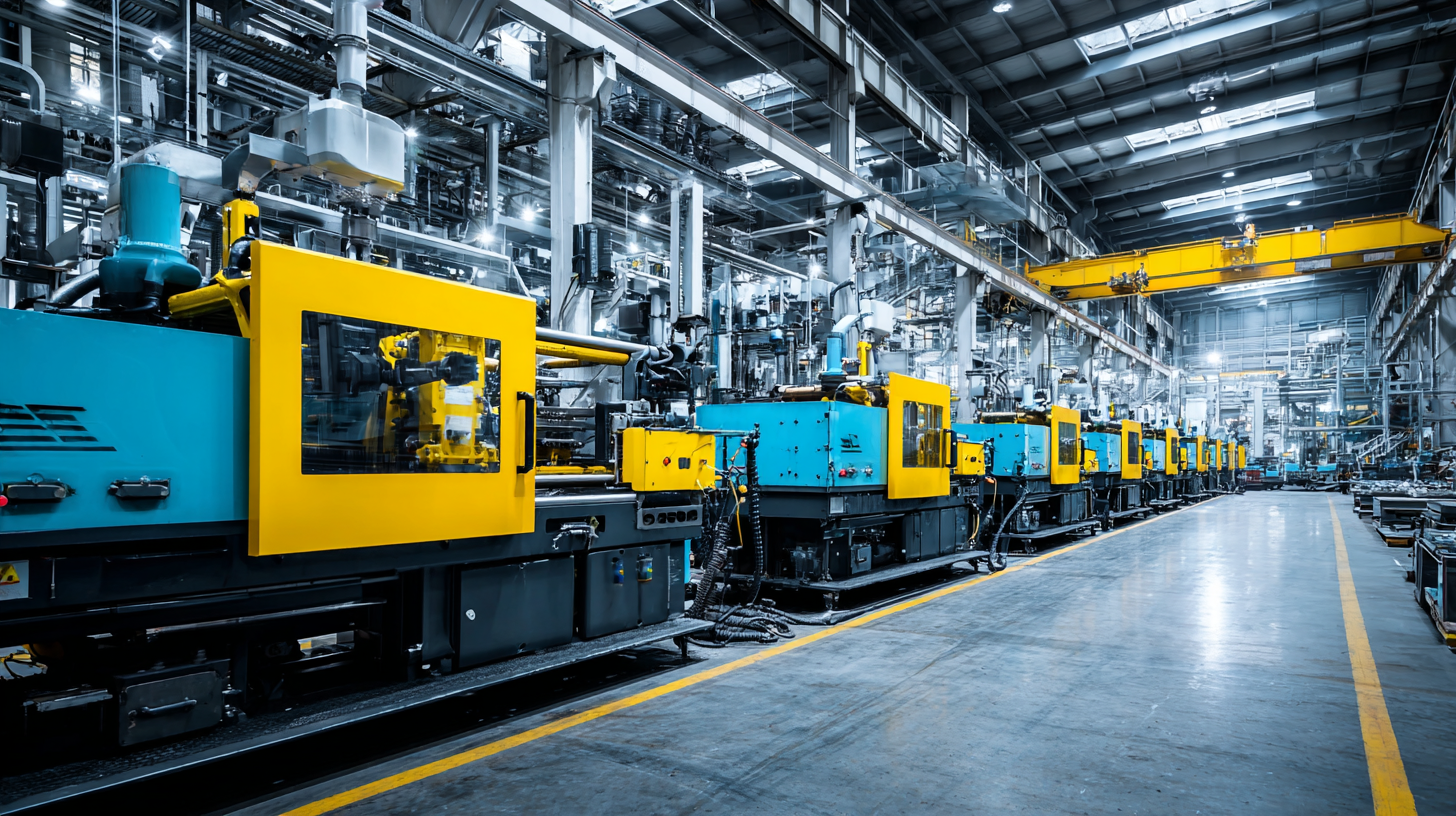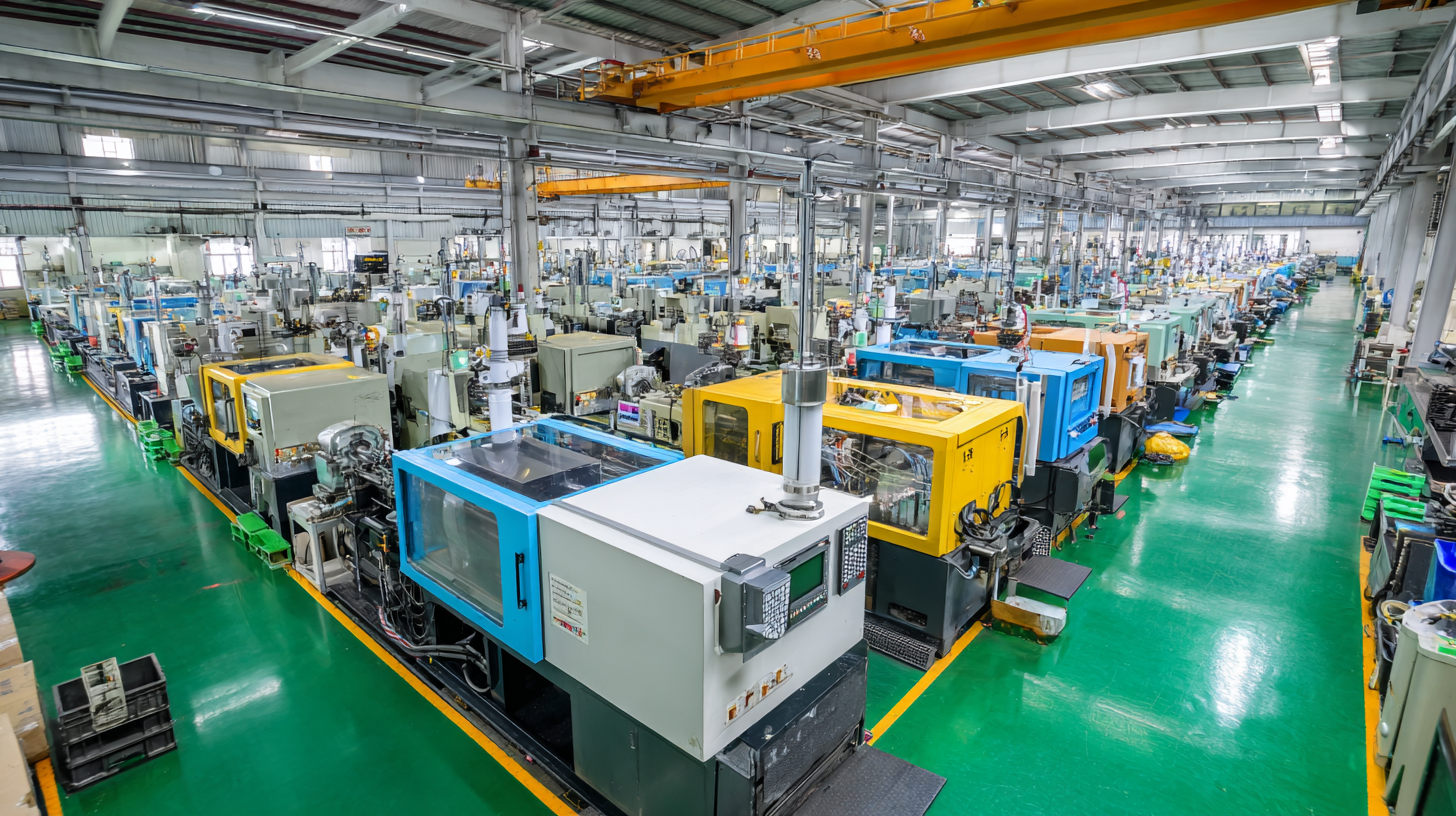
Exploring the Benefits and Applications of Various Injection Molding Products in Today's Industry
In today's fast-paced industrial landscape, understanding the advantages and applications of various injection molding products is crucial for businesses seeking to enhance their manufacturing processes. As we delve into this topic, you will learn injection molding techniques that not only streamline production but also improve product quality and reduce costs. From automotive components to household items, the versatility of injection molding plays a significant role in modern manufacturing, allowing for innovative designs and efficient material usage. This blog will explore the myriad benefits this technique offers, including the ability to produce complex shapes with precision, reduce waste through recycling opportunities, and foster rapid prototyping. Join us as we uncover the reasons why injection molding is an essential method in today's industry and how it can be leveraged to meet the evolving demands of consumers.

Overview of Injection Molding Techniques and Their Evolution in Modern Manufacturing
Injection molding has evolved dramatically since its inception, shaping the landscape of modern manufacturing. Historically, this technique began in the 19th century, primarily using thermoplastic materials. Today, however, advancements in technology have led to the use of various materials, including advanced composites and bio-based plastics. According to a report by MarketsandMarkets, the global injection molding market is projected to reach $300 billion by 2025, with a compound annual growth rate (CAGR) of 3.5%. This growth underscores the technique's adaptability and efficiency in meeting diverse industrial demands.
Modern injection molding techniques now incorporate innovations such as multi-material injection molding and in-mold labeling, enhancing product functionality and reducing waste. The shift towards sustainability is evident, with companies increasingly adopting processes that minimize environmental impact. A study from Allied Market Research suggests that sustainable practices in injection molding could reduce carbon footprints by 20-30% by 2030. These advancements not only improve production efficiency but also position the industry towards a more sustainable future, catering to the rising demand for environmentally friendly products. The evolution of these techniques demonstrates injection molding's critical role in supporting various sectors, from automotive to consumer goods, ensuring high-quality production while addressing contemporary challenges.

Key Advantages of Injection Molding Products in Various Industries Today
Injection molding has become an integral part of various industries due to its unparalleled efficiency and adaptability, particularly in the medical sector. The precision offered by plastic injection molding is paramount; it ensures the accurate production of medical devices, which is crucial in a field where reliability is non-negotiable. Recent reports indicate that the plastic injection molding market for medical devices is anticipated to surge as healthcare expenditures rise, highlighting the growing significance of this manufacturing process in meeting high-demand medical needs.
Moreover, the implementation of Metal-polymer hybrid (MPH) injection molding technology further expands the versatility of injection molding in modern manufacturing. This innovative process merges the advantages of both metals and polymers, allowing for the creation of components that are both strong and lightweight, thereby enhancing product performance across industries like automotive and electronics. Additionally, advancements such as integrating artificial intelligence into mold making are streamlining production processes, ultimately leading to improved quality and reduced lead times. By focusing on sustainability, many manufacturers are transitioning to all-electric injection molding machines, which not only minimize the environmental footprint but also optimize energy efficiency, making this technology a critical player in the landscape of contemporary manufacturing.
Exploring the Benefits and Applications of Various Injection Molding Products in Today's Industry
| Industry | Injection Molding Product | Key Advantages | Applications |
|---|---|---|---|
| Automotive | Dashboard Components | Durability, Cost-effectiveness | Vehicle Manufacturing |
| Consumer Electronics | Mobile Phone Cases | High Precision, Lightweight | Smartphones Production |
| Medical | Syringes | Sterilization, Biocompatibility | Healthcare Equipment |
| Packaging | Food Containers | Recyclability, Cost Efficiency | Food Industry |
| Household | Storage Bins | Versatility, Customization | Home Organization |
Innovations in Materials: Exploring Alternatives to Traditional Injection Molded Plastics
The quest for sustainable alternatives to traditional injection molded plastics has led to significant innovations in materials used in the manufacturing process. As industries seek to reduce their environmental impact, bio-based polymers and biocomposites are emerging as viable options. These materials, derived from renewable resources such as cornstarch and sugarcane, not only help lower carbon footprints but also enhance product biodegradability. Companies are investing in research to improve the properties of these materials, making them suitable for a wide range of applications, from consumer goods to automotive parts.
Additionally, advancements in recycling technologies are allowing manufacturers to utilize post-consumer plastics in injection molding processes. Recycled materials can be re-engineered to meet the performance standards required for various applications, ultimately contributing to a circular economy. By focusing on alternative materials, manufacturers are not only addressing environmental concerns but also responding to consumer demand for more sustainable products. This innovative shift in material selection reflects a broader industry trend towards responsible manufacturing practices that prioritize both performance and environmental stewardship.
Applications and Benefits of Injection Molding Products
Future Trends: The Role of Technology Advancements in Injection Molding by 2025
The advancements in technology are set to significantly transform the injection molding industry by 2025, focusing on increased efficiency and sustainability. As businesses strive for better production capabilities, technologies such as automation, artificial intelligence, and advanced materials will reshape traditional processes. The global market revenue for plastic injection molding is projected to grow from USD 10.50 billion in 2025 to approximately USD 13.70 billion by 2033, highlighting the robust demand for innovative solutions in this sector.
Tips for businesses looking to leverage these advancements include embracing automation to streamline production, which can lead to reduced labor costs and increased precision in manufacturing. Additionally, companies should focus on integrating sustainable practices, such as utilizing recycled materials and optimizing energy consumption during the injection molding process. This not only meets regulatory requirements but also aligns with consumer preferences for environmentally friendly products.
Moreover, staying informed about emerging startups in the packaging industry can provide valuable insights into new technologies and methods that can enhance product offerings. Engaging with these innovations allows businesses to remain competitive and adapt to evolving market trends. By 2025, those who invest in technological advancements will likely see enhanced operational efficiency and improved product quality, contributing to overall business growth.
Sustainability in Injection Molding: Environmental Alternatives and Best Practices
In today's industrial landscape, sustainability has become a paramount focus, especially in the realm of injection molding. As companies strive to reduce their carbon footprint, innovative materials and practices have emerged that prioritize environmental responsibility. Biodegradable plastics, for example, are gaining traction as a viable alternative to traditional petroleum-based polymers. These materials not only lessen environmental impact but also cater to the growing consumer demand for eco-friendly products.
Moreover, implementing best practices in the injection molding process can significantly enhance sustainability efforts. Techniques such as reducing cycle time, optimizing energy consumption, and recycling scrap material can lead to a more efficient production system. Companies are increasingly investing in advanced technologies, such as machine learning and IoT, to monitor and minimize resource use. By fostering a culture of sustainability, the injection molding industry can not only improve its environmental performance but also drive economic benefits through cost savings and enhanced brand reputation.

